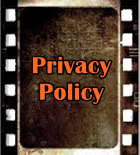From Cimmeria to Eire
Among the many pleasures that movies give us is the ability to see a moment in time preserved forever. A motion picture is invariably something like a time capsule because it captures real people over a period of time, say from 90 minutes to three hours or more, talking and doing things.
Now, feature films do not reflect the reality of their moment the way that documentaries do. The documentary is aiming to collect and preserve visual and aural artifacts for posterity. The feature film is aiming to entertain or to provoke. It is all play acting, make believe. And yet I suggest that, in a strange way, the feature film may actually tell us more about the moment in which it was made than a documentary. This is because, knowing that a feature film is a deliberate illusion, we watch it through our own filter. The documentary, on the other hand, may be taken at face value because it is considered non-fiction—even though choice of subjects, editing and lots of other factors make a documentary film pretty much as subjective as any other kind of movie.
As for the feature film, even when it is set in a time and place that is not contemporary, a host of traits about the historical moment of its production are on view. Hairstyles, manner of speaking, attitudes and even dress can be discerned—even when the setting is ostensibly some other country and some other era. Even in a contemporary setting, the world we see on the big screen may not be the real one, but it is invariably the one that creative people think they are living in at the time.
I was thinking about this after my recent sojourn in the wilds of southwest Ireland. Voluntarily cut off from satellite television, my digital video recorder and reliable internet connection, our late night distractions were generally limited to terrestrial television, i.e. the same four Irish TV channels (three in English, one in Gaelic) that anyone with an aerial can get. Charmingly, not only was our reception at the mercy of the wind and other elements (of which there were plenty) but also of distractions and interruptions, since there was no pausing or rewinding, as we have become accustomed to with our video viewing. Ah, it’s good to get back to the old ways. At least when it’s not too often and doesn’t last too long.
Anyway, we saw a couple of late night movies during our time there. One was the 1984 epic Conan the Destroyer, Richard Fleischer’s follow-up to John Milius’s 1982 original, Conan the Barbarian. Nothing puts things into historical perspective better than seeing the current governor of the state one was born and grew up in playing a mythical warrior with long hair and few clothes. At the time the Conan movies came out, I remember thinking how much more realistic they seemed, compared to older fantasy epics I remembered from the 1950s. But, in hindsight, I see now that they weren’t all that far removed from flicks starring the likes of Steve Reeves. And, in the future, we will probably look back at the current crop of CGI extravaganzas and wonder why we were so impressed. I think it may have something to do with the fact that new movies comport more with our sense of modernity. When the world around us changes, what used to look modern starts to look dated.
Anyway, it was a real blast from the past to see Arnold in his prime, as well as others I had forgotten were in the movie—like the very striking model/singer Grace Jones and basketball legend Wilt Chamberlain as warriors, Sarah Douglas as an evil queen and Oliva D’Abo in her debut as a spoiled princess, four years before her gig on The Wonder Years. And, of course, the veteran character actor Jeff Corey, as the grand vizier, and Oscar winner Mako (returning from the first movie) as the wizard.
The other movie we watched was a 2000 Irish release called Country. Definitely not to be confused with the 1984 American save-the-farm flick starring Jessica Lange and Sam Shephard, it belongs to an Irish genre (which includes such other examples as Korea, This Is My Father and Garage) that I tend to call “Life in the country is miserable and grim and glimmers of hope appear only to be cruelly snuffed out.” I know. I need to work on a better label that is shorter and catchier.
I guessed the film to be set in rural Northern Ireland a few decades in the past, maybe in the 1950s. But it turns out to have been set in the 1970s, and the filming was done in County Wicklow. The writer/director Kevin Liddy is from Limerick and, strangely, this was the first broadcast of the film on Irish television, even though the film did quite well at film festivals, including taking the top prize at the Galway Film Fleadh. It tells a simple enough story, largely from the perspective of a young boy. His father is coping with alcoholism and a bad temper, the uncle he was close to has just died, and life is generally grim. But there are rays of hope in the aunt from London (his dead mother’s sister) who has stayed on after the funeral and in a budding friendship with an older boy, who belongs to a Traveller (Irish gypsy) clan camping in the area.
We see themes that are common in these types of Irish films: the Travellers are a bit romanticized (thought not as much as in some other movies), young people yearn to escape but are inevitably thwarted, and the meanest people in the community generally ruin things for everybody else. I admit to being a bit sensitive about portrayals of rural life because I myself grew up in a rural area and have been living in rural Ireland for a few years now. For some reason, filmmakers’ views of rural life tend to seem to err, on one side, on romanticizing country life or, on the other, on painting it as some sort of dark, uncivilized place. It is no surprise that Liddy has said in an interview that he is a great admirer of Terence Malick, who demonstrated a similar flair for marrying attractive visuals to rural melodrama in Days of Heaven.
In the end, movies like Country are clearly indicative of a certain reality and a certain mindset that characterized rural Ireland and which still prevails in places. If anything puts me off this sort of movie, aside from the fact that it’s just your general feel-bad experience, it’s the lack of any perspective outside that of the characters trapped in their limited lives. Maybe the characters, like the people they are based on, are limited. But the creative mind that can put together a film like this certainly isn’t. Give us some insight beyond wallowing in how bad things used to be and maybe still are.
To get back to my original point, about how movies nearly tell us more about the era in which they were made than about the era they purport to depict, Country tells us less about what 1970s Ireland was like and more about what 1970s Ireland looked like from the turn of the millennium.
-S.L., 3 July 2008
If you would like to respond to this commentary or to anything else on this web site, please send a message to feedback@scottsmovies.com. Messages sent to this address will be considered for publishing on the Feedback Page without attribution. (That means your name, email address or anything else that might identify you won’t be included.) Messages published will be at my discretion and subject to editing. But I promise not to leave something out just because it’s unflattering.
If you would like to send me a message but not have it considered for publishing, you can send it to scott@scottsmovies.com.














